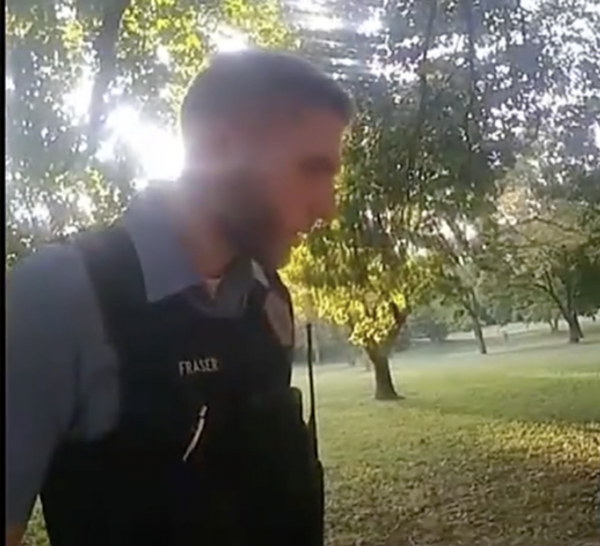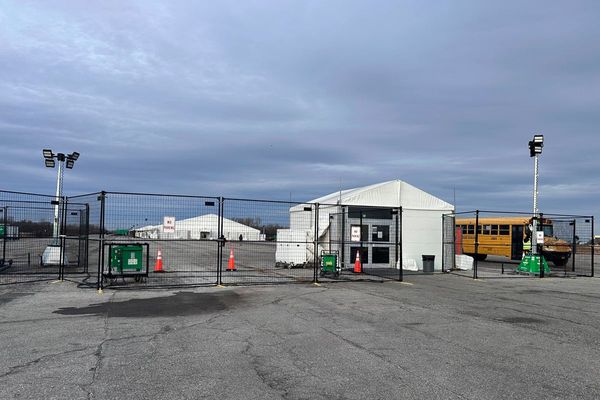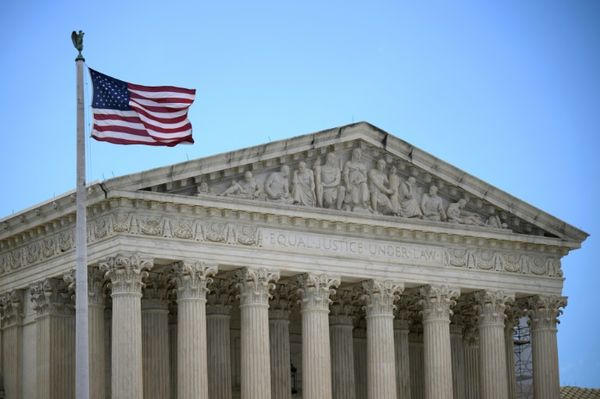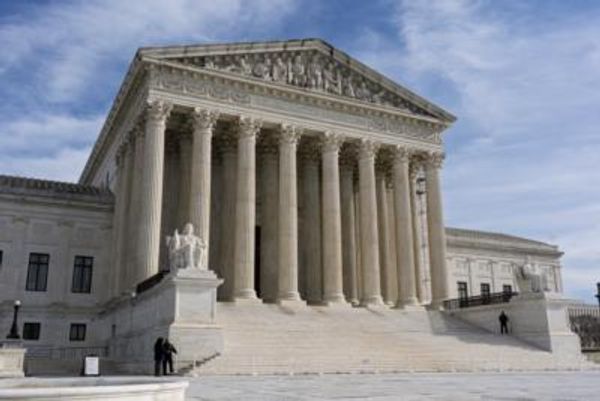A web of roads encircles the Earth and stretches 40 million miles. In Crossings, a new book by environmental journalist Ben Goldfarb, tarmac is exposed for the planet-shaping force it is – one that has polluted rivers and the air, emptied soils and woodlands, and struck fear into wild animals.
Roads are one of the most ubiquitous man-made features, existing on every continent and in most habitats. Their effects don’t end at the paved periphery either. While roads cover 1% of land in the US, their ecological effects – disruptive noise, foul air and habitat fragmentation, to name a few – extend over 20% of the country, according to Goldfarb.
Furthermore, transport is among the fastest-growing contributors to climate change, wildlife collisions with vehicles cause more than 59,000 human injuries in the US each year, and road design disproportionately burdens the health and welfare of low-income and minority communities.
As an ecologist who studies their effect on wildlife, I applaud Goldfarb for weaving such a rich commentary on roads. Crossings could not be more timely: the biggest expansion of infrastructure in history is underway – and road networks are growing fastest of all.
An estimated 25 million miles of new road lanes will be built worldwide by 2050. Roadbuilding will have to change drastically for any hope of preserving biodiversity and halting climate change.
But first, we must face some uncomfortable truths.
Vehicles are modern super-predators
Roads bring us into contact with animals we rarely see. Unfortunately, they’re usually dead.
Despite roadkill being a common sight, its consequences are easily ignored. Vehicles directly kill more land-based vertebrate animals than anything else humans do, be it poaching, hunting, trapping or causing fires.
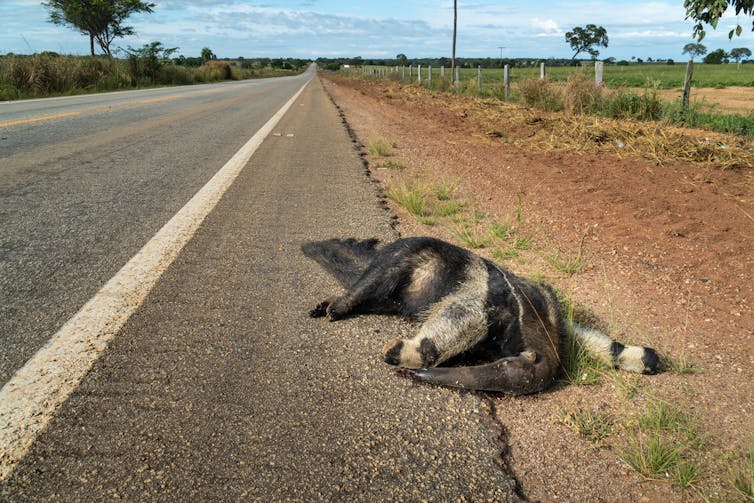
Roads and their effects are so pervasive that they even leave a mark in DNA. For example, after years of flying in between and over cars, cliff swallows have evolved shorter wings to nimbly avoid getting hit by them.
Swifts are, in one sense, a success story. Other species haven’t been so lucky. Throughout Crossings, roads are described as knives, scalpels and guillotines that carve up the landscape. Nor are waterways spared: culverts (tunnels that carry streams and rivers under roads) are so ubiquitous and faulty that they have thwarted fish migrating upstream to breed, and caused populations to collapse.
Even the sounds that roads create can dramatically change animal lives. Robins, wrens and great tits raise the frequency of their calls to be heard above cars. One study found that some birds spent so much additional energy around noisy roads, trying to listen for predators, that they were too tired to forage and starved.
‘A road is never just a road’
Highways and dirt roads enable deforestation, hunting, urban sprawl and tourism. More than 50 studies have shown what this means for wildlife. Elk, bears and wolves have learned to associate cars with the hunters they carry. These animals avoid roads not because of the vehicles, but because of the people inside them.
Roads have created a new “landscape of fear”, according to ecologists; one that governs how animals behave in an environment. Species may avoid being killed by remaining on one side of a busy road – but by clinging to safety like this, they increase the rate at which natural habitats are being broken up.
Goldfarb also explores the racist legacies of interstate highways that were bulldozed through predominantly Black and Latino neighbourhoods in his native US, dividing families and causing extensive economic damage. One such neighbourhood in the Bronx is tightly bound by three expressways. Here, asthma kills three times more people than the national average.
And a paper published by the Paris regional health agency calculated that even the noise from roads shortens the lifespan of some Parisians by up to three years.
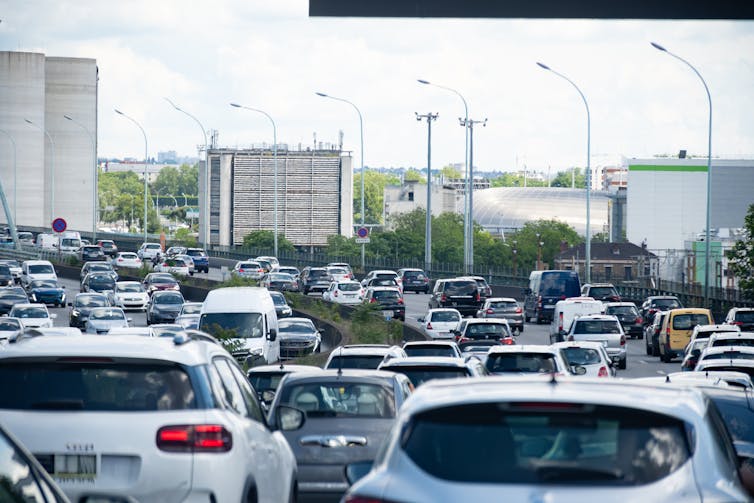
Redesigning roads
Solutions in road ecology have, to date, been more reactive than proactive. This is because many roads were built long before their harmful effects were understood. For example, the US Forest Service has only recently started to remove a proportion of the 370,000 miles of road it manages.
The difficulty with mitigating the effects of roads is in changing driver behaviour. Road signs rarely slow drivers down. In fact, some people intentionally swerve to hit animals. The best solutions remove choice altogether.
In one example, Goldfarb praises the SP-139 highway in Carlos Botelho state park in southern Brazil. When I worked there in 2015 and 2016, I saw how this highway was closed at night, and that the road was designed to wind and undulate, forcing drivers to slow down. The Brazilian government dared to inconvenience drivers, and wildlife was the better for it.
The dream of road ecology is a dream of connectivity. Wildlife crossings, bridges and other man-made structures that go over or under roads offer an opportunity for animals to cross safely. They are, as Goldfarb says, “the work of literal and metaphoric bridge-building”. In Banff National Park, Canada, 44 wildlife crossings have helped cut the number of collisions between cars and large mammals by more than 80%.
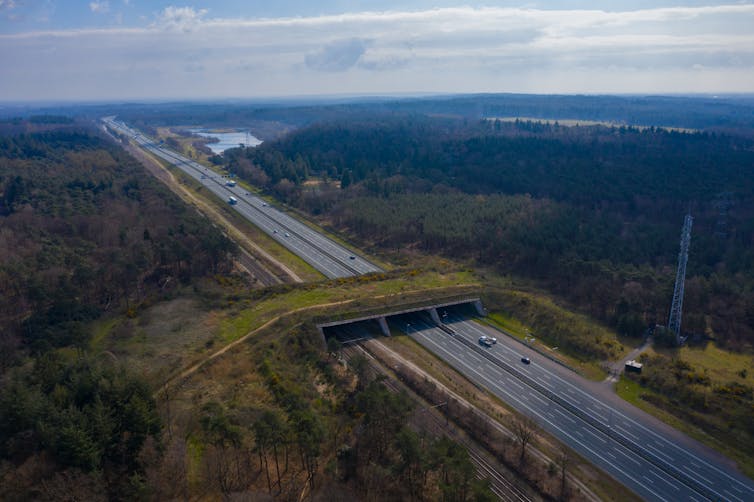
Goldfarb proposes building more of these. But, while there are several case studies demonstrating their success, I doubt that crossings are a panacea for the coming infrastructure tsunami.
Research shows that what works for a handful of species may not work for others. Foxes and feral cats in Australia used road crossings on average three times more frequently than scientists expected. In stark contrast, 40% of surrounding animal species were not detected at a crossing at all. Whether effective or not, wildlife crossings could become a new form of greenwashing that excuses more roads and more destruction.
To wildlife, roads spell death and division. People are the cause – but they can also be the solution. I share Goldfarb’s optimism and hope road ecology will grow into a global campaign for a kinder, more connected world.
In the meantime, I urge you to read Crossings.

Don’t have time to read about climate change as much as you’d like?
Get a weekly roundup in your inbox instead. Every Wednesday, The Conversation’s environment editor writes Imagine, an award-winning short email that goes a little deeper into just one climate issue. Join the 35,000+ readers who’ve subscribed so far.
Lauren Moore does not work for, consult, own shares in or receive funding from any company or organisation that would benefit from this article, and has disclosed no relevant affiliations beyond their academic appointment.
This article was originally published on The Conversation. Read the original article.
